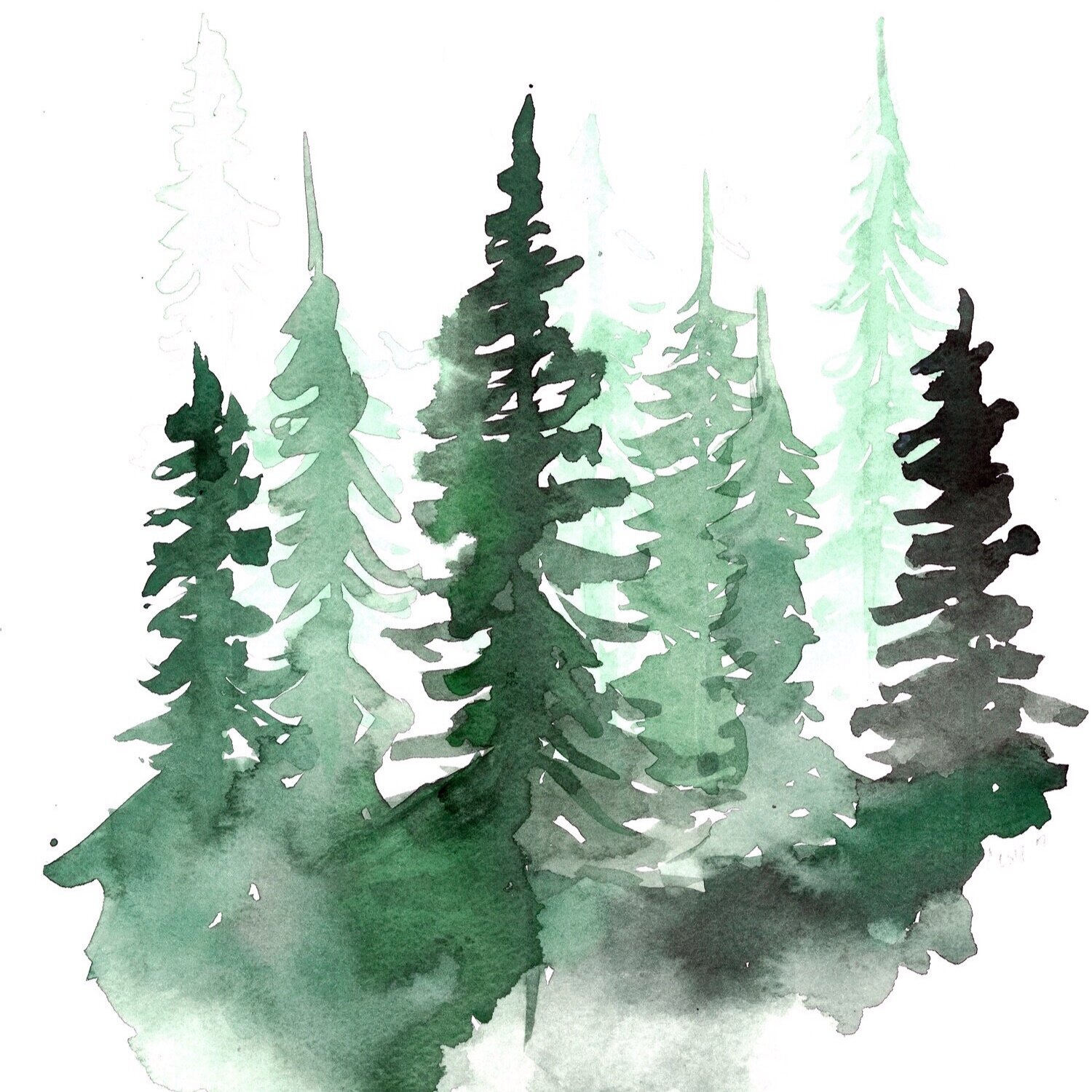Embracing the Canvas: The Heart of Your Artistic Adventure
Embarking on the artistic journey of painting a forest watercolor scene is a thrilling endeavor that immerses you in nature’s serenity and the boundless world of creativity. The canvas, whether it’s a pristine sheet of watercolor paper or a repurposed board, becomes the heart of this adventure – a blank slate awaiting the transformation into a living, breathing depiction of a verdant forest. It’s essential to choose the right quality paper, ideally one that can handle the fluidity of watercolors without buckling, setting the stage for a masterpiece that will endure the test of time.
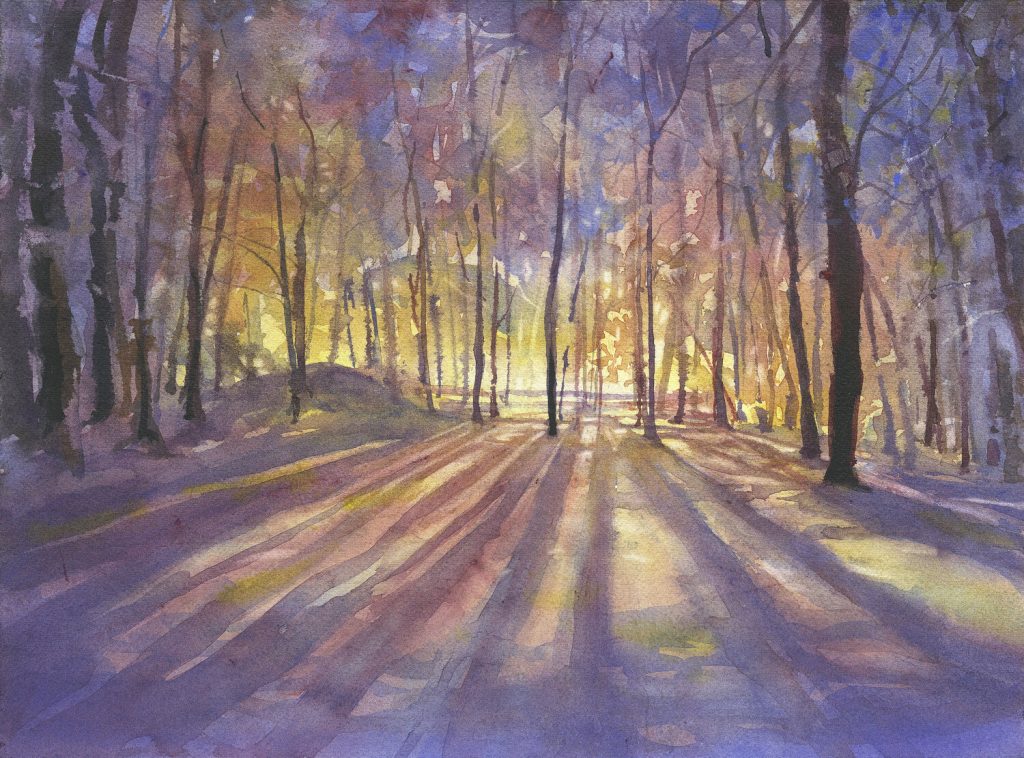
The Symphony of Colors: A Palette for Nature’s Hues
Selecting your color palette is akin to curating a symphony of hues that resonate with the essence of the forest. Begin by assembling a harmonious collection that includes shades of green for the foliage, earthy browns for tree trunks and soil, blues and grays for distant mountains or skies, and perhaps a touch of red or yellow to represent wildflowers or autumn leaves. Remember, the secret to capturing the ethereal beauty of a forest lies in the subtle variations within these colors; mix and layer them to emulate the complexity and depth found in nature.
Sketching the Soul: A Blueprint for Your Vision
Before the first brushstroke touches the paper, a delicate pencil sketch outlines the composition. This underdrawing serves as a roadmap, guiding the placement of trees, the flow of a meandering stream, or the play of light through the canopy. Keep the lines light and loose, allowing room for spontaneity and adaptation as the paint brings life to your vision. Sketching also encourages mindfulness, forcing you to observe the intricate details and patterns in nature, translating them into a balanced and visually appealing arrangement.
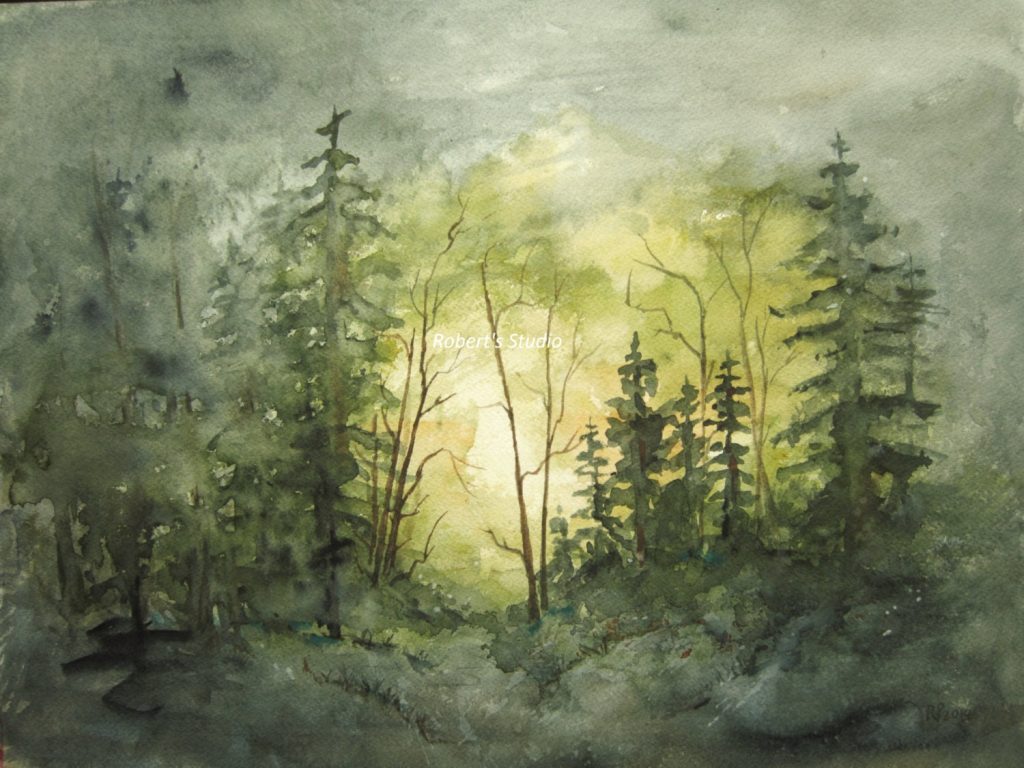
Wet-on-Wet Technique: Emulating Nature’s Fluidity
Dipping your brush into a pool of clean water, you embark on the wet-on-wet technique, a cornerstone of watercolor painting that beautifully captures the fluidity and unpredictability of nature. By wetting the paper first and then applying your pigments, you encourage them to blend and interact organically, mimicking the way sunlight filters through leaves or mist hugs the forest floor. This method requires a balance between control and surrender, trusting the medium to create its magic while skillfully guiding the colors to form the desired shapes and shadows.
Layering Textures: Bringing Depth to Your Forest
To infuse your painting with a sense of depth and dimension, layering becomes crucial. Start with lighter washes for the background, gradually building up to darker, more saturated tones for elements in the foreground. Layering not only refers to colors but also to textures – the rough bark of ancient trees, the delicate lace of lichen, or the intricate weave of fallen leaves. Use various brush strokes, from sweeping motions for broad tree trunks to stippling for foliage, to create a tapestry of textures that invites the viewer deeper into the scene.
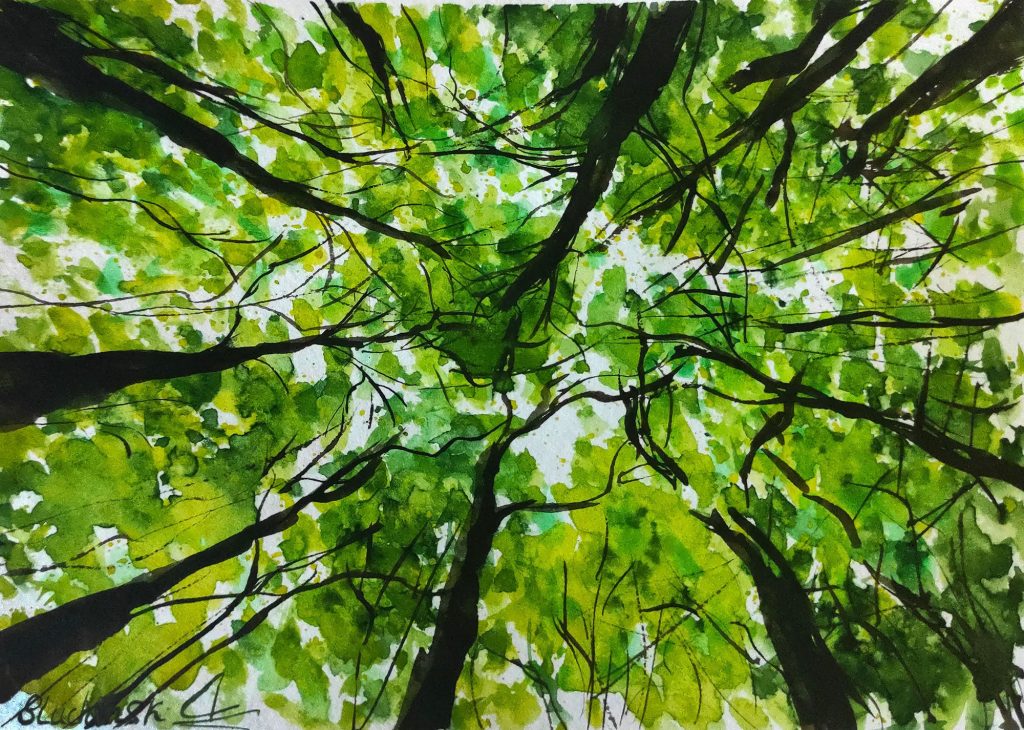
Playing with Light and Shadow: The Dance of Illumination
Light is the orchestrator of mood in any painting, and in a forest scene, it plays hide-and-seek amidst the dense foliage. Observe how sunlight pierces through the canopy, casting dappled patterns on the forest floor, or how shadows lengthen as the day wanes. Capture these moments by strategically placing highlights and shadows, perhaps with a touch of white gouache for the brightest spots or layering darker greens and blues for the depths of the forest. This interplay adds a sense of movement and vitality, transforming a static image into a narrative.
Capturing the Essence: The Spirit of the Forest
Beyond the technical aspects, the true spirit of your forest watercolor lies in capturing its unique atmosphere. Is it a serene, early morning scene where the forest awakens? Or a mysterious twilight where shadows grow long and creatures stir? Allow your emotions and experiences to guide your brush, infusing each stroke with a sense of wonder and respect for the natural world. This personal connection transforms your painting into more than just a visual representation; it becomes a portal to a world that exists beyond the canvas.
Finishing Touches: The Final Polish
As your painting nears completion, step back and assess it with a critical eye. Are there areas that need more definition? Spots where a touch of contrast would enhance the overall effect? Perhaps a few dashes of vibrant color to punctuate the greenery? With a steady hand and a fine brush, apply these finishing touches thoughtfully, being mindful not to overwork the piece. Remember, sometimes less is more, and knowing when to stop is an art in itself.
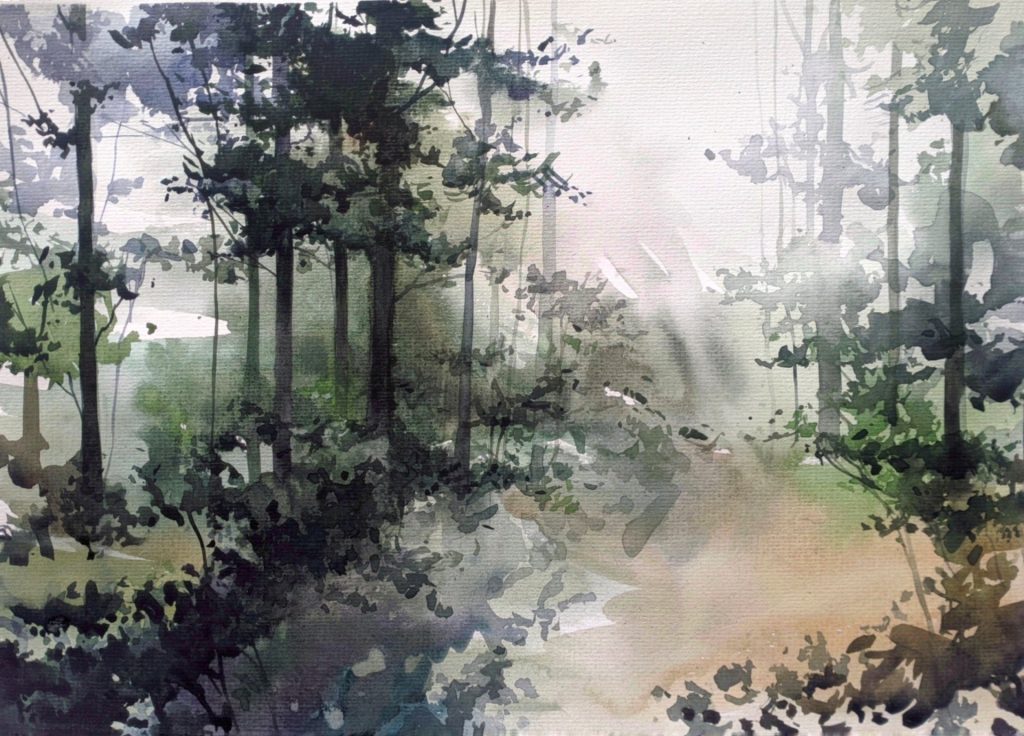
Preserving Your Masterpiece: The Care and Keeping of Watercolors
Once your forest scene has dried completely, it’s crucial to protect it from fading and damage. Consider spraying it with a fixative designed for watercolors, which will help to set the pigments and reduce the risk of smudging. Framing behind UV-protective glass further safeguards your artwork, ensuring that the colors remain vibrant for years to come. Proper storage and display practices ensure that your artistic adventure continues to inspire and captivate viewers long after the last brushstroke.
Embracing Evolution: Learning from Each Forest Tale
Each watercolor painting you create, especially those depicting forests teeming with life and light, is a chapter in your artistic journey. As you continue to explore the dance of illumination and the spirit of various forest scenes, embrace the evolution of your style. Compare earlier works to your latest pieces—note the progress in your understanding of light, shadow, and the emotive power of color. Don’t shy away from experimenting with new techniques or color palettes; every forest has its unique voice waiting to be expressed through your brush.
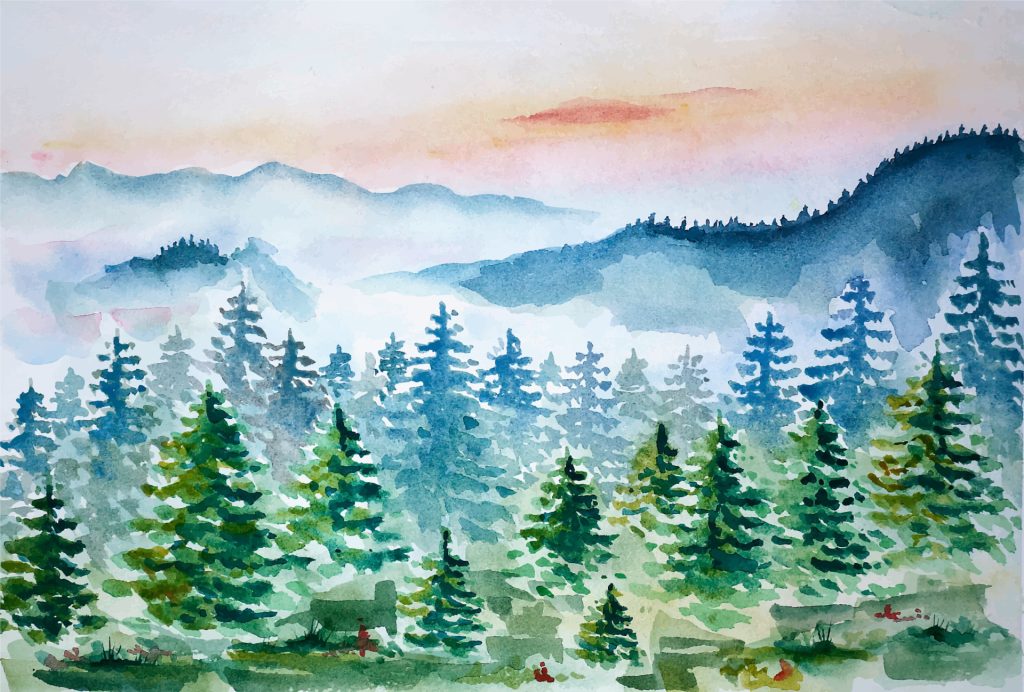
Reflecting on the Journey: Lessons from the Forest
Completing a forest watercolor painting is not merely the end of a project; it marks the beginning of a new understanding and appreciation for nature’s intricate beauty. Each stroke, each decision, each moment of inspiration drawn from the forest imbues your work with a story, making it a testament to your artistic growth and connection with the natural world. As you embark on future artistic adventures, carry with you the lessons learned amidst the trees – the importance of observation, patience, and the magic that happens when you let the medium guide you. In this way, every painting becomes a continuation of your artistic odyssey, each one richer and more profound than the last.





